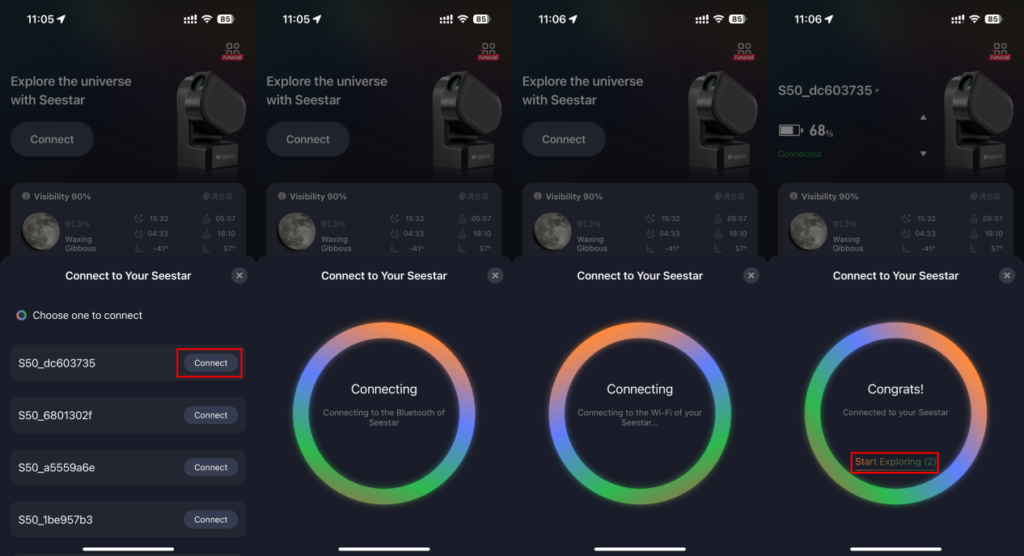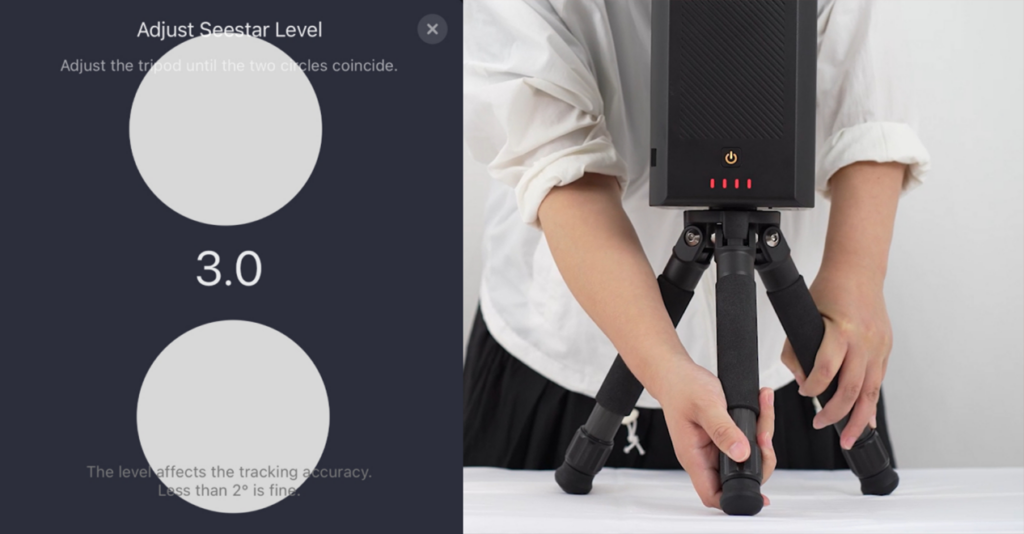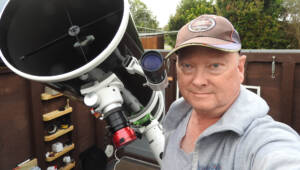
[ASI2600 Guide] 4 Connection methods to get 55mm back focus length
People are asking the connect methods of ASI2600MM Pro: How to use it with the new 36mm EFW? How to reach the 55mm back focus distance? What accessories I need

A total solar eclipse is a spectacular and mysterious astronomical event in nature, not only sparking curiosity about the universe but also capturing the attention of countless astrophotographers.

On April 8, 2024, a total solar eclipse will traverse North America, passing through Mexico, the United States, and Canada. The path of this total eclipse will begin in Mazatlan, Mexico, and continue through Texas, the United States, all the way to Maine, finally concluding in New Brunswick, Canada. Cities along the route will serve as observation points for the total eclipse. It is estimated that nearly 130 million people will have the opportunity to witness this total eclipse, with approximately 52 million residing within the path of totality, while the rest will observe varying degrees of partial eclipse.

On April 8, 2024, people from this narrow band stretching from Texas to Maine will have the chance to witness the total solar eclipse, while all 48 contiguous states of the United States will experience a partial solar eclipse.
Credit: NASA SVS
Link: https://science.nasa.gov/eclipses/future-eclipses/eclipse-2024/where-when/
The table below provides the times when the total eclipse begins in select cities along the path of totality in the United States. These areas will also experience partial eclipses before and after these times.

The total eclipse this year will last for a long duration of 4 minutes and 28 seconds, making it one of the longest total solar eclipses of the 21st century. The occurrence of a total solar eclipse is due to the unique positioning of the Moon in its orbit. When the Moon is precisely positioned between the Earth and the Sun, forming a straight line between the Moon, Earth, and Sun, the sunlight is completely blocked by the Moon, resulting in a total solar eclipse. This alignment of relative positions only occurs under specific conditions, making total solar eclipses a relatively rare astronomical phenomenon.

During this time, the Sun will disappear completely into the shadow of the Moon, leaving behind a dazzling corona surrounding the dark lunar disk. As the outermost layer of the solar atmosphere, the solar corona is typically obscured by the intense brightness of the Sun’s light and is only visible to the naked eye during a total solar eclipse. The shape and brightness of the corona vary with solar activity, sometimes appearing as slender streamers, other times as curved rings, and occasionally as intricate spirals. Observing the solar corona can help astronomers study the structure and activity of the Sun, as well as the effects of solar wind on Earth.
Of course, safety should always be the top priority when observing a total solar eclipse. Directly viewing the Sun with your naked eyes can cause serious damage to your eyes, so it is essential to wear specialized solar observation glasses. If you are photographing the solar eclipse, avoid pointing your camera lens directly at the Sun, as this could damage your equipment unless your lens is equipped with a certified solar filter.
To use Seestar for capturing a total solar eclipse, follow these steps:
Please prepare a Seestar S50 with a tripod and solar filter before everything else.

1. Connect the Seestar S50 to your mobile device. Simply follow the instructions below.

2. Once connected, adjust the leveling status of Seestar S50.
Go to “Me” – “Advanced Feature” and find “Adjust Level”. Click on the “Adjust” button to enter the leveling adjustment page.

In the leveling adjustment page, adjust the tripod legs corresponding to the direction indicated by the circles in the app until the two circles in the app overlap, indicating that the Seestar is leveled.

Any deviation value blow 2 degree is acceptable. But the less the value is, the better.

3. After completing the leveling adjustment, switch to solar mode, lift the Seestar S50’s lens by controlling the direction button on your screen, and install the solar filter.
For easy installation and the removal process afterwards, it is recommended to attach the filter handle to the side of the lens.

4. Click on “Installed & GoTo”. Seestar will automatically searching for the Sun.

Once GoTo is successful, click “Yes” to confirm that the Sun is now in the frame. Turn on the Centering feature to keep the Sun in the center of the frame.
Use “AF” to focus on the Sun for a clearer preview image. Adjust the exposure using “±” icon. Both automatic and manual modes are supported. In automatic mode, the desired brightness of the Sun can be adjusted by adjusting the brightness value of the preview image throughout the entire observation process. For better imaging results, it is recommended to use manual exposure during the total solar eclipse since essential parameters such as exposure time and gain can be adjusted in this mode.

Once the basic adjustments are completed, your Seestar S50 is ready to track and shoot the Sun accurately. Slide the bottom of the app to select “Time-lapse”, “Photo,” or “Video” to start your creative work. During shooting, you can click “RAW” to capture raw files for later post-processing.
As an astronomical spectacle, a total solar eclipse not only shows the wonders of planetary movements in the universe, but also provides excellent opportunities for photographers. When observing a total solar eclipse, photographers should prioritize safety, choose the right observing location and equipment, and be well-prepared to ensure that they can capture the wonderful moments of the total solar eclipse. Let’s look forward to the arrival of the total solar eclipse and record the beautiful moments of this magnificent scene with the revolutionary Seestar S50.
For more information about the Seestar S50, please visit the Seestar official website >>>

People are asking the connect methods of ASI2600MM Pro: How to use it with the new 36mm EFW? How to reach the 55mm back focus distance? What accessories I need

Hello Andrea Arbizzi,thanks for accepting our interview invitation. Congratulations on winning the ASIWEEK competition in week#42/2024! Q1: At first, congratulation that your nice image won #ASIWEEK. Can you introduce yourself

Hello Peter Dunsby,thanks for accepting our interview invitation. Congratulations on winning the ASIWEEK competition in week#46/2024! Q1: At first, congratulation that your nice image won #ASIWEEK. Can you introduce yourself

Hello Juzelle Jardin,thanks for accepting our interview invitation. Congratulations on winning the ASIWEEK competition in week#45/2024! Q1: At first, congratulation that your nice image won #ASIWEEK. Can you introduce yourself

Hello Kevin,thanks for accepting our interview invitation. Congratulations on winning the ASIWEEK competition in week #41/2024! Q1:At first, congratulation that your nice image won #ASIWEEK. Can you introduce yourself to